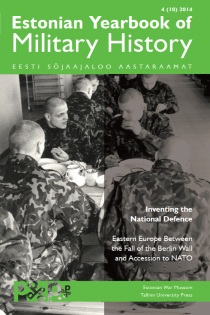Abstract
Poland’s transition from an authoritarian communist regime to a liberal democracy and market economy and from an army controlled by the country’s only party, the Communist Party, to actual civilian control started at the end of 1989, in particular after Lech Walęsa was elected president. Unlike many other postcommunist states, especially Germany, Poland regards the army as an institution that is the nation’s school, the bearer of national unity and the guarantee of the state’s existence. The Armia Ludowa – people’s army – of communist Poland took over many national traditions of the Polish army, combined them with Marxist and pro-Soviet ideology, and stayed out of political games despite being controlled by the political main directorate of the party. Both the party and the army derived their legitimacy from the people. After the declaration of martial law in 1981, the army unexpectedly found itself with all the power and this was a serious blow to the prestige of the army in the eyes of the people.
The changes made at the beginning of the 1990s were small at first: members of the high command of the army were released from duty or resigned, but younger officers, many of them former members of the party, stayed on. The patron saints of the units and pre-war traditions were restored and field ordinariates of the three biggest churches were established, although there were Catholic chaplains in the Polish army also before 1989. Two crises were important from the viewpoint of civilian control: the first of them was related to the attempt by the conservative Defence Minister Jan Parys to cleanse the ranks of officers and the other to the public non-confidence motion against Defence Minister Piotr Kołodziejczyki by the Chief of the General Staff. The position of the Chief of the General Staff (i.e. the army) in relation to the Defence Minister, the parliament and the President was regulated thereafter. The military intelligence created after World War II similar to the Soviet Army was reorganised as late as 2006.
The transition to democratic civilian control was driven more by the desire of Polish politicians and generals to join NATO than internal developments in Polish politics and the army. In Poland, the army is regarded as a national institution that has certain immunity. The example of Poland shows that the post-communist transition of the army to democratic civilian control is in many respects comparable to the post-fascist transition of the armies in Germany, Italy, Spain or Portugal.

This work is licensed under a Creative Commons Attribution-NonCommercial-NoDerivatives 4.0 International License.
Copyright (c) 2014 Eesti Sõjaajaloo Aastaraamat / Estonian Yearbook of Military History
